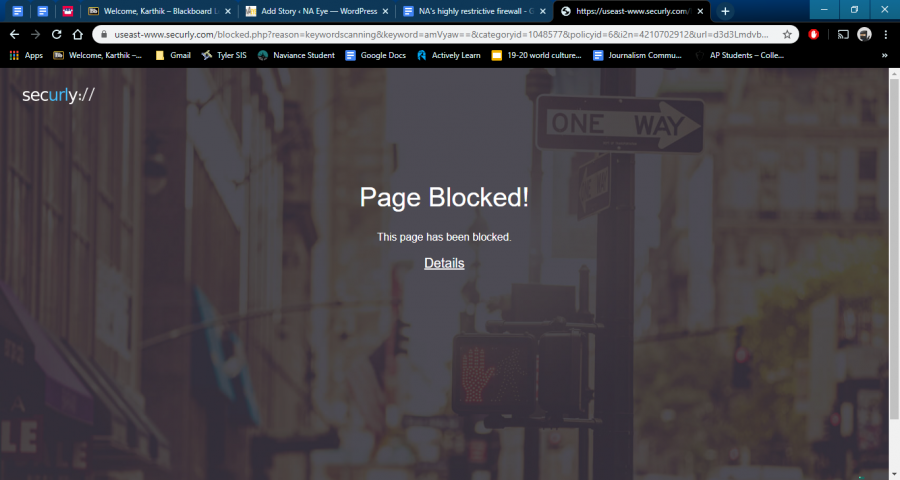Blocked?!
You know how it goes. You look something up. Click on the link. And you’re redirected, not to your desired link, but to the dreaded “useast-www.securly.com”. Great. What could’ve caused it? Turns out, it was blocked for a specific keyword. You abandon the topic, since all the variations of the word are blocked as well. Deciding to relax, you look up one of your favorite computer games, Papa’s pizzeria. And guess what? That is also blocked, under the category of games.
Two pressing questions. First, why are you playing games in school? Secondly, this firewall’s very restrictive, don’t you agree?
For the most part, it’s reasonable. But there are examples that are too harsh, such as the word jerk, likely blocked in an attempt to reduce bullying. But if that were the case, why is a derogatory word like ho/hoe allowed? Hm, strange. Normally those scenarios would be reversed.
Next, cover the popular game, Fortnite. Blocked again, likely because two years ago we were all looking up funny moments and epic trickshots. The videos have also been blocked, which brings me to the subject of our Youtube restricted mode.
If the system decides the videos are inappropriate, that’s okay, because there’s a good reason. But if a video is manually reviewed by a teacher, and deemed appropriate, the algorithm could use some work.
And even then, it’s not a foolproof method. Mr. Hull, an English teacher and an advisor of NA Eye, reports that after he approves a video for North Allegheny, it is not accessible by his students. And recently, YouTube searches have been restricted to playlists rather than actual videos. Why? What purpose does it serve? Wyatt Skopov-Normane (10) complains, “YouTube videos are unnecessarily filtered, and you can’t really look anything up.”
Now onto a separate issue, yet still very related. You are making a presentation and need a good image to effectively sum up your point. For example’s sake, your topic is about jingoism, or nationalism in the form of aggressive foreign policy, such as a country’s advocacy for the use of threats or actual force, as opposed to peaceful relations, in efforts to safeguard what it perceives as its national interests.
Opening the images tab, one quickly realize that although the first few images are accurate and helpful, continuing to search for that perfect image yields this:

The school’s policy of allowing only images that were labeled for reuse offer few helpful images. Nathaniel Tabuso (10) states, “I looked up a picture of a bird so I could draw it, and I got pictures of oars (the kind you use to row a boat).”
Recently, when creating a presentation for English regarding Julius Caesar, students reported having a difficult time finding quality images to utilize within their presentation (at least, while on a school laptop). In addition, Ryan Nash (10) reports, “When trying to find medical information for my insulin article, many websites were blocked for dubious reasons.”
This results in students having to employ sidestepping techniques such as emailing themselves the image on a separate device.
And even then, students have to deal with Tiger ID, the school’s new method of linking the students school account, and it is often a tedious process, with browsers asking you to sign into Securly every time a new site is opened.
Previously, NA Eye had run a poll asking what the school should unblock, and besides Tetris, most people agreed that the school should unblock “Everything”.
Naturally, there are notable exceptions to “Everything”, but if a student asked for a reasonable website to be unblocked, then it seems reasonable for it to be unblocked. Perhaps we could look into a possible solution, such as direct appeals from a teacher.
Nonetheless, students have to live with this, and hope for some change.
And to sum it all up:
John Dowd(10) – “Securly is bad.”

Karthik Arutla is a fifteen-year-old sophomore at NAI. This is his first year of journalism. He enjoys video games and creative writing.



Jack Westman • Feb 27, 2020 at 8:22 am
Thank you Karthik, very cool!